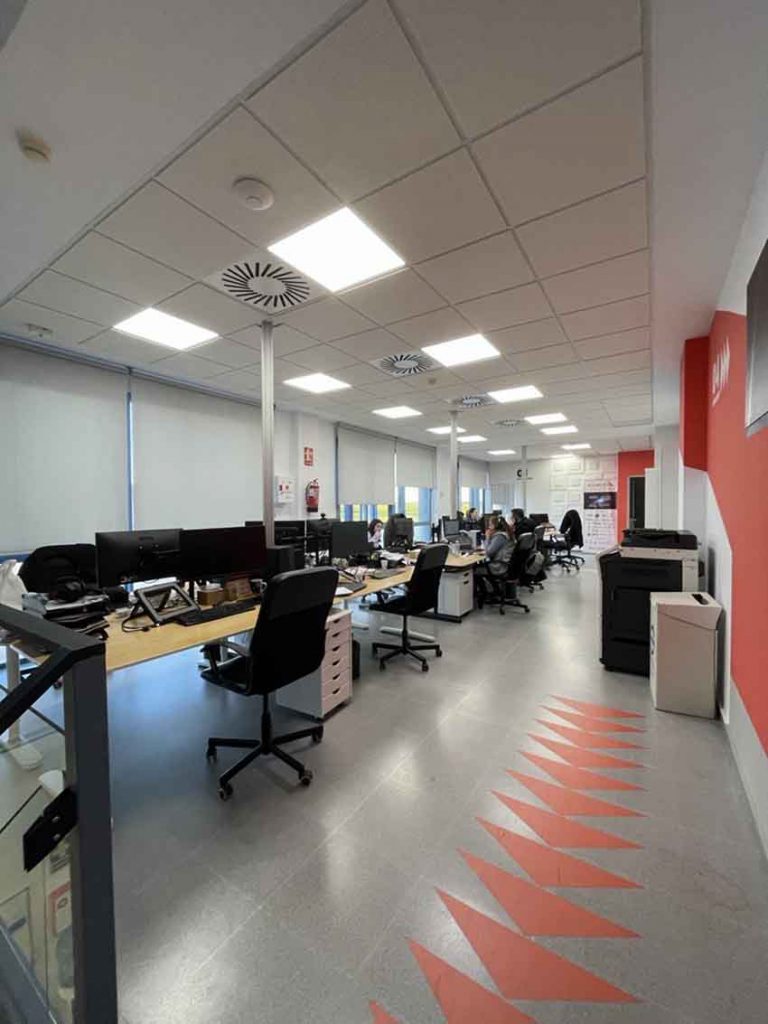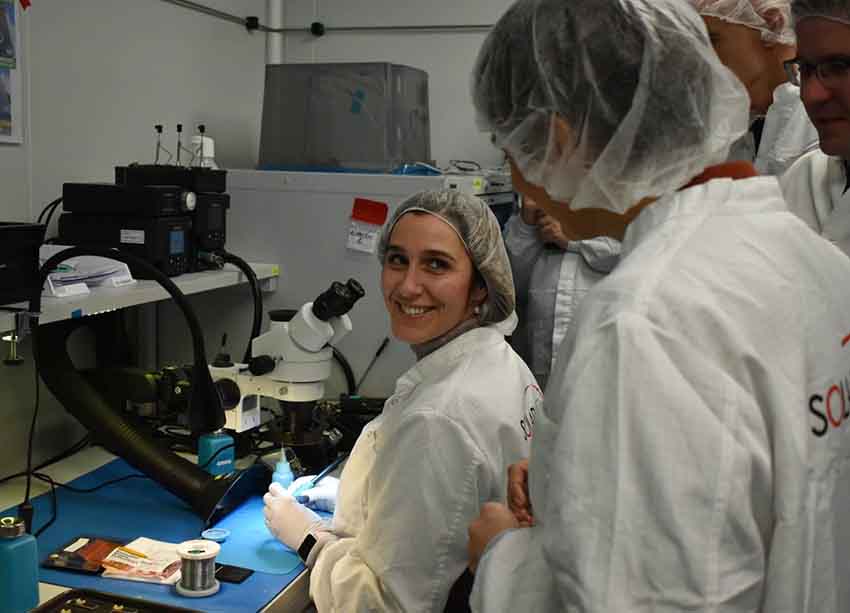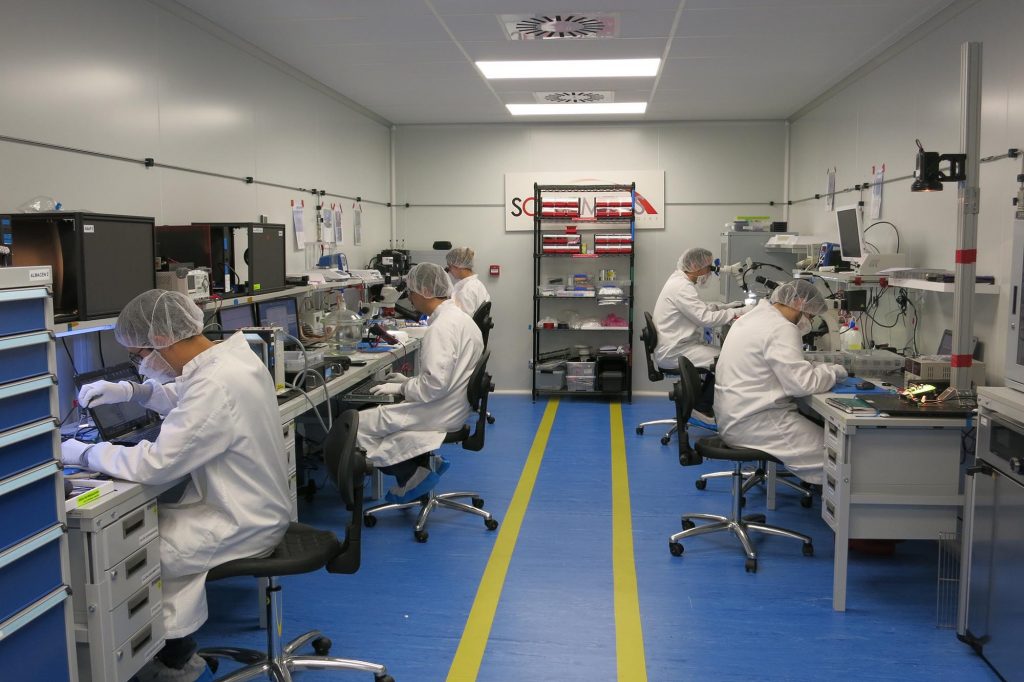Solar MEMS Technologies (SMT) is a technology-based SME specialized in microsystems technology (MEMS) and its application to the development of high accuracy sun sensors and control systems for the Space sector and other high-tech applications. SMT was created in 2009 as a spin-off of the University of Seville, with a highly qualified founding team with more than 20 years of experience in the development of research and engineering projects.
The company is currently a leader in the development of high accuracy sun sensors and adapted control systems, marketing various families of solar sensors with different requirements and applications.
Interview with Jose Miguel, General Manager at Solar MEMS Technologies.
Easy Engineering: A brief description of the company and its activities.
Jose Miguel: The company has various models of sun sensors for different types of satellites and missions, as well as other in-orbit navigation instruments, which offer the best performance in terms of size, precision, consumption and price. With units in orbit since 2009, SMT has established itself as the world’s leading supplier of sun sensors in the Smallsat industry, with more than 4,000 units delivered to companies, space agencies and technology centers around the world and with an estimated global market share of 15%.
E.E: What are the main areas of activity of the company?
J.M: SMT’s expertise includes:
- Development and optimization of sun sensors for satellite attitude and orbit determination control systems (ADCS).
- Development of other sensors for space ADCS systems: Star Trackers (STNS) and horizon sensors (HSNS).
- Development of calibration equipment and ground evaluation of sensors (SCOE and OGSE).
- Solar tracking solutions for industry (automotive, renewable energy, UAVs, defense, home automation, etc.).
- Application of MEMS technology in space and industrial developments.
- Development of hardware and software, including custom electronics and mechanics.
- Engineering and consultancy services for customized applications in different high technology sectors.
In addition to this, SMT has actively participated and cooperated in various projects both at national and international level.

The company exports 98% of its sales, with more than 100 clients spread over more than 50 countries and key alliances with distributors present on 3 continents.
In addition, SMT currently has two clean rooms with an industrialized manufacturing and assembly line for the serial production of electronic devices for space applications.
E.E: What’s the news about new products?
J.M: SMT is currently in a process of growth through diversification with the development of new products and entry into new markets. As an example, the company will commercialize very soon a miniaturized Star Tracker (STNS) for the smallsat industry. STNS device fabrication combines microelectronics technology based on a SoC-FPGA with a CMOS camera, leading to a high integrated device with small area and low weight. In addition to this, STNS does not require the use of external memories or any extra processing unit. STNS unit has recently passed acceptance tests and will be launched before Q4 2023.
In addition to this, the company has developed a light stimulator for sun sensors. This is an optical ground support equipment (OGSE) with different controlled light sources to stimulate and test sun sensors, designed to work under thermal vacuum conditions.
Solar MEMS has also the capability of designing and producing OGSE equipment for rapid Star Tracker testing in the satellite production line.
E.E: What are the ranges of products?
J.M: Microsystems technology applied to the manufacture of high-precision sun sensors, which consists of manufacturing electronic and optical devices on a very small scale, allows reducing the size, weight and consumption of these devices, which are usually critical parameters in space industry. SMT sells various families of sun sensors of this type, which measure the angle of incidence of a sunbeam, both in elevation and in azimuth, and are adapted to different needs and sectors. SMT has several models of solar sensors with its certified version for space and its low-cost version for engineering tests. The market to which these products are directed is mainly that of Small Satellites (SmallSats, <600Kg). Much more information is available at www.solar-mems.com.
The applications of these sensors are:
- Determination of the attitude of the satellite.
- Determination of the exact position of the satellite.
- Positioning of the solar panels perpendicular to the incident light, to achieve maximum energy conversion.
- Positioning of the satellite at specific points of its trajectory.
Regarding the industrial sector, SMT includes adaptable sun sensors for all types of applications (renewable energies, navigation and geolocation control for UAVs, automotive, home automation, etc.) and control systems for solar trackers.
E.E: At what stage is the market where you are currently active?
J.M: Currently, the space industry is immersed in a time of technological revolution, in which new companies such as SpaceX, Planet or OneWeb are revitalizing the sector by introducing new technologies and demanding systems with better features. The growth of the NewSpace segment, as a result of the entry of more and more players from the private sector, is fostering new needs never seen before in this market, such as lowering costs and improving the performance of the current equipment and subsystems. This makes special sense in the development of satellite constellations, where the requirements for navigation, positioning and orientation in orbit are increasingly demanding in applications such as terrestrial observation or telecommunications.

According to verified sources, it is estimated that around 18,500 small satellites (<600 kg) will be launched in the period 2022-2031 throughout the world. This segment, which has the highest growth projection in the space sector, is precisely the one for which SMT products are intended. Specifically, 82% of all satellites launched from 2012 to 2021 would fall into the category of small satellites or “Smallsats”, representing 94% of all launches in 2021 with 1,743 Smallsats placed in orbit during that year.
According to Euroconsult report, in the period 2012-2021 a total of more than 4,600 satellites have been launched, which is equivalent to an industry with a value of 23,100 million dollars, and market forecasts estimate almost 18,500 new satellites in the period 2022-2031, which is equivalent to a market value of 84,000 million dollars. With these forecasts, the estimated growth rate in the next decade will be multiplied by four compared to the previous decade.
E.E: What can you tell us about market trends?
J.M: In this new paradigm, attitude and determination control systems (ADCS), in charge of correctly positioning and orienting satellites in orbit, play a fundamental role. The sensors that make up an ADCS are sun sensors and Star Trackers (which use star constellations for orientation).
The current space industry demands that this critical equipment be increasingly robust, small, cheap and efficient.
Specifically, sun sensors are devices used to determine the position of the Sun, and constitute a vitally important element in the ADCS systems of a satellite. As the Sun is the most prominent celestial body in the solar system, it is a perfect reference to correctly position a satellite in orbit, which allows it to orient its solar panels, thermal radiators, thrusters and, in particular, its payload units, optical instruments and antennas. The determination of the attitude is therefore critical for the safety of a satellite, since it helps to maintain the orientation in a stabilized way and avoids high speeds of rotation in orbit. Given the characteristics of the space sector, these devices are expected in the next years to be accurate, quick to respond, lightweight, reliable, and with low consumption.
E.E: What are the most innovative products marketed?
J.M: The most innovative product marketed this year is an optical ground support equipment (OGSE) based on a controlled and stable light source to stimulate optical sensors, designed to work under vacuum inside thermal cycling chambers (TVAC). It includes a 19” 2U rack controller and up to 3 optical heads (stimulators) per unit, with an interface for PC to operate remotely. Operator can manage and set the intensity of the stimulation from the controller front panel or from a software interface in a remote computer connected to the LS3 through an USB connection.

This equipment, called LS3, operates without touching the sensor or the platform where the device to be stimulated is placed, and it is compatible with any sun sensor, solar panel, or any other optical sensitive device whose view spot is below 25mm in diameter. However, stimulator beam can be customized to cover wider area.
LS3 has two operation modes: Manual mode, in which light intensity output per stimulator is not stabilized (operator sets the intensity of the light but this is not controlled against temperature, pressure or ageing variations) and Automatic mode, in which intensity output per stimulator is controlled and kept stable.
Additionally, several controllers can be integrated together inside an industrial container, to get an equipment with more than 3 optical heads.
E.E: What estimations do you have for 2023?
J.M: During this year we expect to invoice more than 3 million euros, doubling last year figures, and in 5 years it is estimated that we will reach a turnover of more than 5 million euros thanks to the imminent launch of new products in the space sector, strong international expansion and entry into new key markets.
During this year SMT has also acquired new facilities and is preparing a new clean room ISO 7 for production with 120 m2 including state-of-the-art equipment for microsystems, optics and electronics development and integration. With this investment, it is estimated that the maximum production capacity will be multiplied by almost three. In addition to this, the acquisition of new equipment will increase the current company capabilities, including a new manufacturing and evaluation line for Sun Sensors, Star Trackers and GSE, new high-density package soldering and inspection station and a new thermal vacuum test chamber for TVAC testing.

